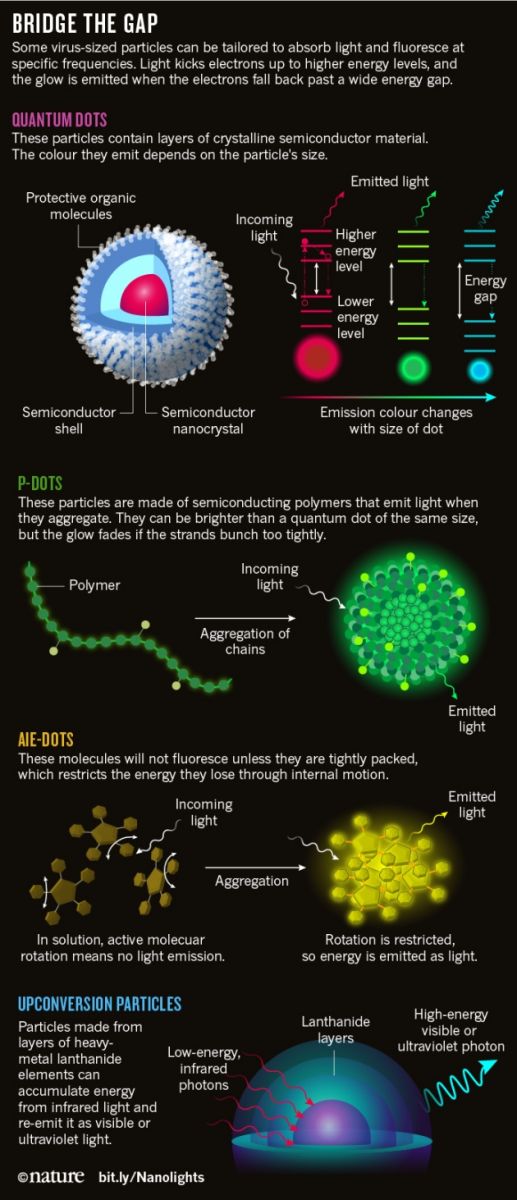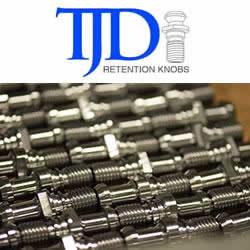Nanolights
From Nature.com:
Ultimately, Goh, a PhD candidate at the National University of Singapore, hopes that the method will help her to find blood vessels that are leaking owing to inflammation, perhaps helping to detect malaria or predict strokes. Crucial to her technique are the virus-sized particles that give the solution its colour. Just a few tens of nanometres across, they are among a growing array of 'nanolights' that researchers are tailoring to specific types of fluorescence: the ability to absorb light at one wavelength and re-emit it at another.
Many naturally occurring compounds can do this, from jellyfish proteins to some rare-earth compounds. But nanolights tend to be much more stable, versatile and easier to prepare — which makes them attractive for users in both industry and academia.

The best-established examples are quantum dots: tiny flecks of semiconductor that are prized for their beautiful, crisp colours. Now, however, other types of nanolight are on the rise. Some have a rare ability to absorb lots of low-energy photons and combine the energy into a handful of high-energy photons — a trick that opens up opportunities such as producing multiple colours at once. Others are made from polymers or small organic molecules. These are less toxic than quantum dots and often outshine them — much to the amazement of chemists, who are used to carbon-based compounds simply degrading in the presence of ultraviolet light... (full article)
Comments (0)
This post does not have any comments. Be the first to leave a comment below.
Featured Product

